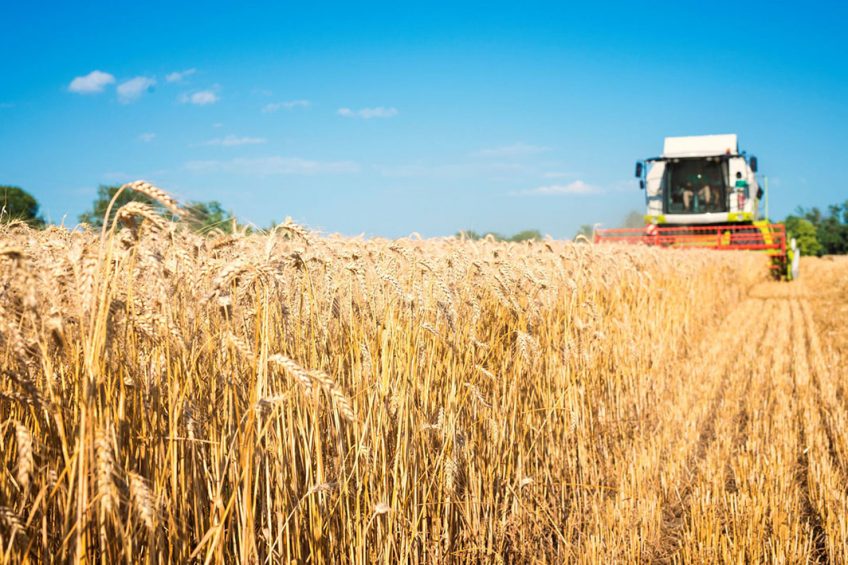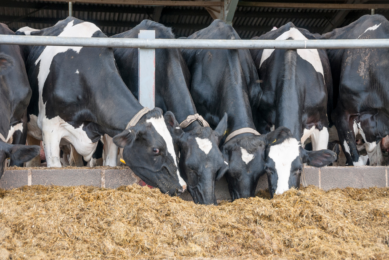Israel relies on grain and feed imports

Israel is almost completely dependent on grain and feed imports to meet its needs. In recent years, dried distillers’ grains with solubles (DDGS) and corn gluten feed (CGF) imports have increased significantly, and wheat is being replaced by cheaper grains.
Over the past 10 years, animal protein production in Israel increased by 1.4%, reaching 832,000 mt in 2018. Annual per capita meat consumption is 86.1 kg per person, ranking it 4th in the world.
Total market for feed milling is 4 mmt
It is estimated that the total market for the Israeli feed milling industry is about 4 mmt (excluding hay and silage). A total of 8 feed mills control about 90% of the local feed milling industry. There are some 150 feed centres, which are communal feed mills operated by local farming communities (i.e., kibbutz). Their typical formulation is composed of grains, oilseed meals (soy, sunflower and canola), and other feed sources such as DDGS and CGF. Israeli feed mills export about 15% of their production to Jordan and the Palestinian Authority.
Grain substitutions in feed milling
The Israeli feed milling industry shifts easily between corn, barley, and sorghum to feed wheat, depending on prices. For example, in MY 2020/21, the increase in feed wheat prices and decrease in corn prices led local feed mills to use larger volumes of corn and less wheat. However, feed mills did not replace it completely. Most mills use computerised systems to assist with substitution decisions in rations as they produce a best-value product considering the costs and benefits of available inputs (protein, carbohydrates, fat, price, etc.). Israeli feed mills produce hundreds of different feed formulas for different usages and for the different growth stages of the animals and each formula has a slightly different feed ratio.
Corn the main feed commodity
Corn is the main commodity with poultry and egg production driving consumption. This is followed by dairy, turkey, and other ruminants. Israel is an insignificant producer of corn (14,000 ha planted in 2020, over half of which is for silage) and depends on imports of feed corn. In MY 2021/22, corn imports are expected to be 2 mmt with imports coming mainly from Ukraine, Argentina, and Brazil.
Israel’s corn consumption in MY 2021/22 is forecast at 1.99 mmt, similar to MY 2020/21.
An increase in wheat harvested
In MY 2021/22, wheat production is forecast at 85,000 mt. This is because of good rainfall is 6.25% higher than the 80,000 mt produced in MY 2020/21. Political protests in recent years in some growing areas led to early harvesting for silage use to limit the burning of fields as Palestinian protestors burnt some 400 ha of wheat along the Gaza Strip. This was a factor in wheat production in MY 2020/21 being 24.5% below the 10-year average of 106,000 mt. About 100,000 ha of wheat are typically planted. But only about 70% is harvested for milling while the remainder is used as fodder for livestock feed.
Feed wheat imports
Feed wheat consumption is influenced by market prices and the availability in the Black Sea Basin. Which supplied over 45% of the grain and feed imported by Israel in the past marketing year. Due to their proximity, Black Sea Basin exporters (primarily Russia and Ukraine) dominated shipments to Israel. However, export limitations placed on wheat by the Russian and Ukrainian governments caused supply shortages and price surges. This in turn led Israeli importers to replace some feed wheat mainly with corn. In MY 2020/21, Israel imported 699,000 mt of feed wheat. This figure is expected to remain stable at 700,000 mt in MY 2021/22.
Barley the 3rd most utilised feed grain
Following feed wheat and corn, barley is the third most utilised feed grain in Israel. Higher volumes of barley are being used in some feed products, replacing the more expensive wheat.
Barley’s main use in Israel is for sheep feed.
Barley and other grains are necessary in feed rations due to the presence of a pigment in corn called xanthophyll that turns broiler meat yellow. Poultry producers and feed millers use higher amounts of barley, sorghum, or even feed wheat to mitigate the strong yellow pigment in chicken meat, which Israeli consumers tend to associate with poor animal health and obesity.
In MY 2021/22 it is forecast that Israel’s barley production will be 15,000 mt, and imports are forecast at around 400,000 mt, which is similar to 2020/21 figures.
The information in this article has been extracted from a USDA GAINS report.











